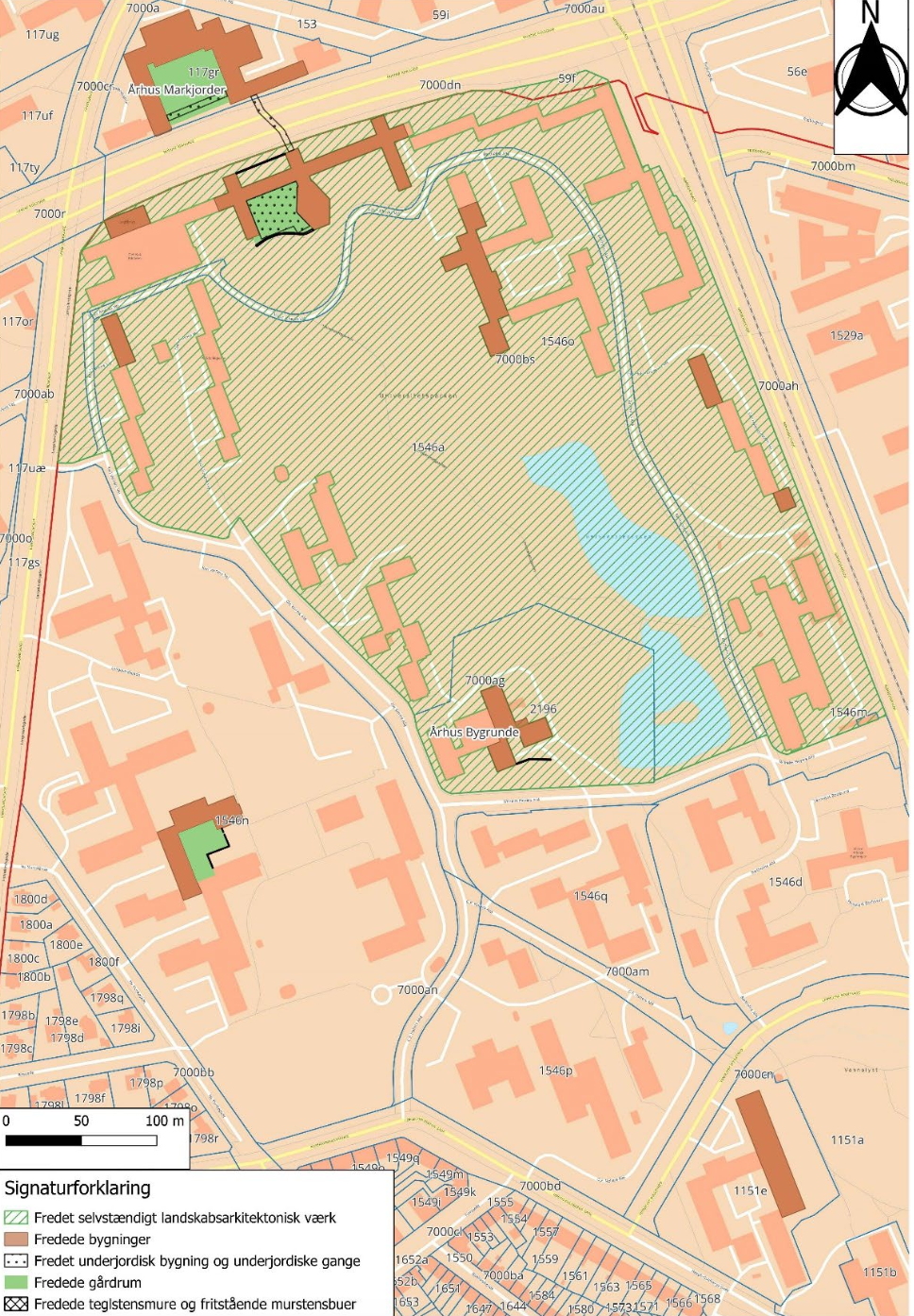Ruling: Parts of Aarhus Campus to be listed
The Agency for Culture and Palaces has just issued its final ruling on the listing of Campus Aarhus, and the area to be listed is smaller than originally proposed. With the new ruling, the listing has taken on more reasonable dimensions, according to the university director.

A decision to list parts of Aarhus University’s original yellow- brick campus has been on the way for quite some time. But there has been considerable uncertainty about the precise extent and boundaries of the listing.
This question has been now been laid to rest: the Agency for Culture and Palaces has just issued a ruling specifying the locations on campus that will be listed.
The agency has selected ten locations and buildings, including the original main building (where the Main Hall is located), the first building to house a department, two residence halls and Stakladen. In addition, the agency has decided to list the central part of the University Park, which has been classified as “an autonomous work of landscape architecture” (see the boundaries of the listing on the agency’s website or the map below).
No plans to list additional areas on campus
Aarhus University’s director Kristian Thorn is reasonably satisfied with the agency’s ruling, he said. At the same time, however, he also considers the decision to list part of campus superfluous. He said:
“Over the course of almost a century, we have demonstrated that we’re capable of stewarding our campus, while also running a modern university, which requires that we continue to develop our laboratory and teaching facilities. That said, I think the agency’s final decision on what parts of campus to list has turned out to have a more reasonable extent than the original proposal.”
The original proposal referred to here is the 2023 proposal from Agency for Culture and Palaces, which was considerably more comprehensive. According to that proposal, the facades of a large number of additional buildings would have been listed as well. And as Thorn explained:
“A listing of that calibre would have made it very difficult to operate a functional university for our staff and students. Now we’ve landed in a better place. And another important point is that with this ruling, the matter is closed: the agency has no plans to expand the listed areas in future.”
The agency’s original proposal was taken off the table and reconsidered on the background of an appeal by the Danish Building and Property Agency, with the support of AU. As a result, the extent of the listed areas has been somewhat reduced.
A need for clear guidelines
Thorn stressed that the focus is now on establishing a collaboration with the agency that reconciles the listing with the ongoing operation and development of the university:
“Fundamentally, of course, we completely agree with the Agency for Culture and Palaces that our campus has a unique status in Danish culture and architecture. The task before us now is to put that agreement into practice in the form of clear guidelines that minimise bureaucratic obstacles and make our collaboration as possible.”
